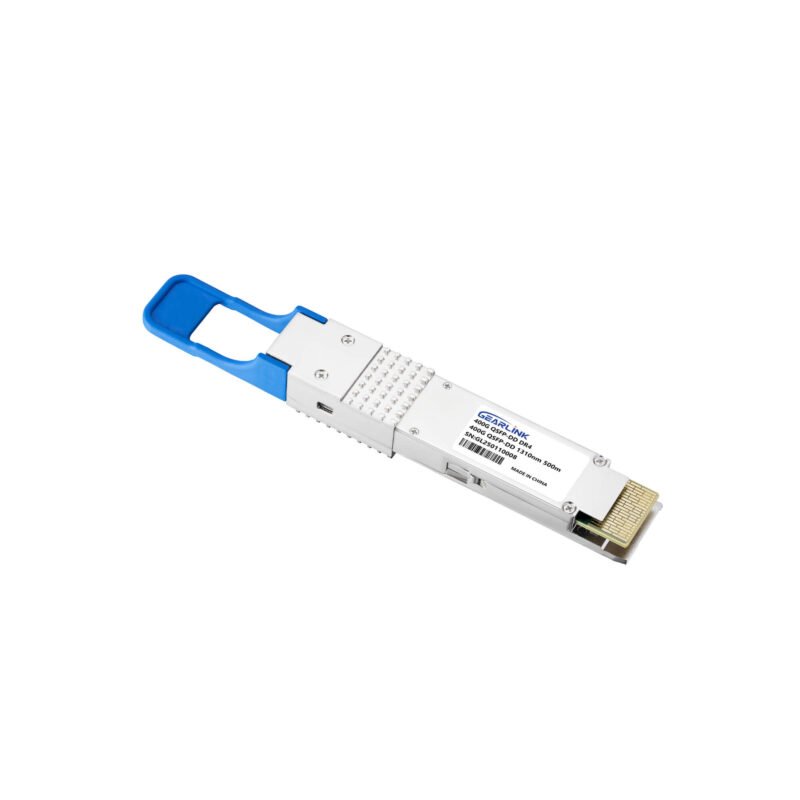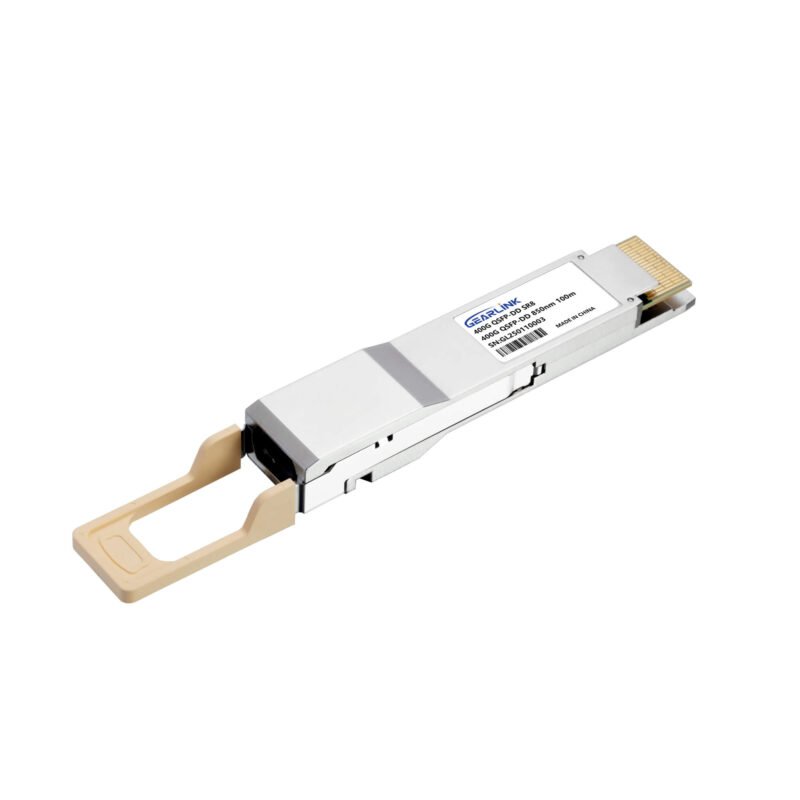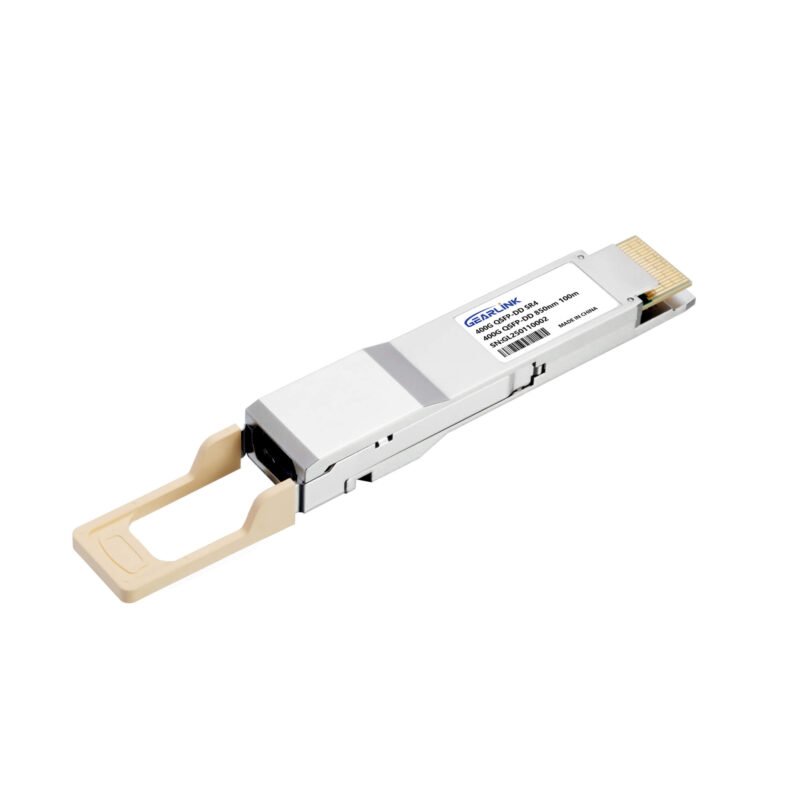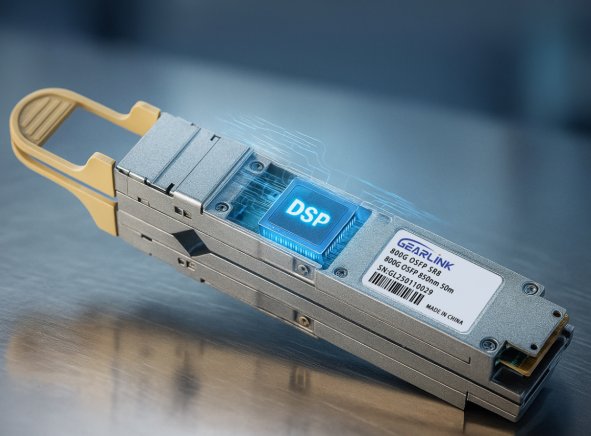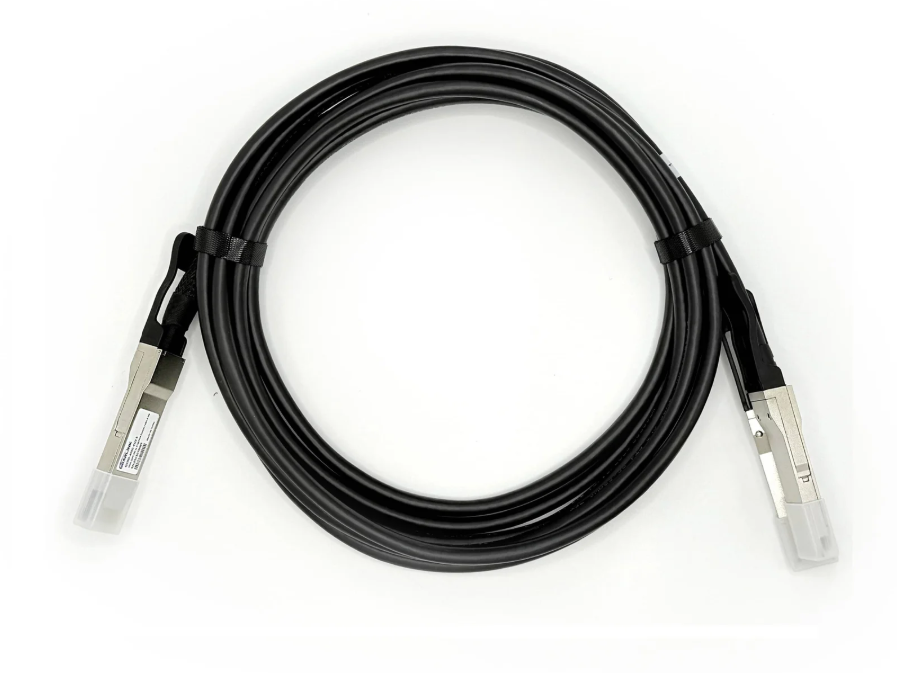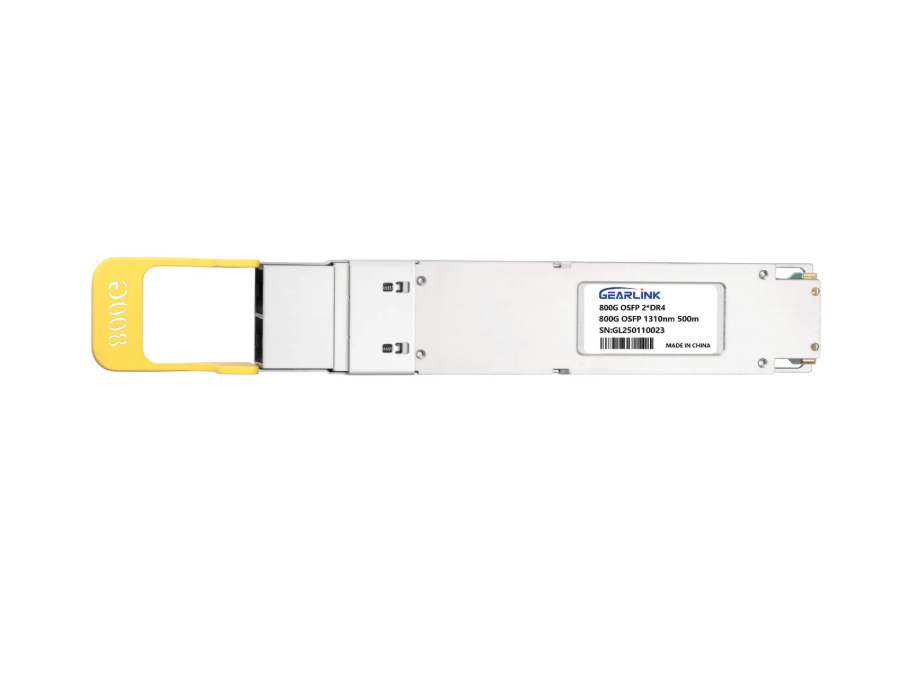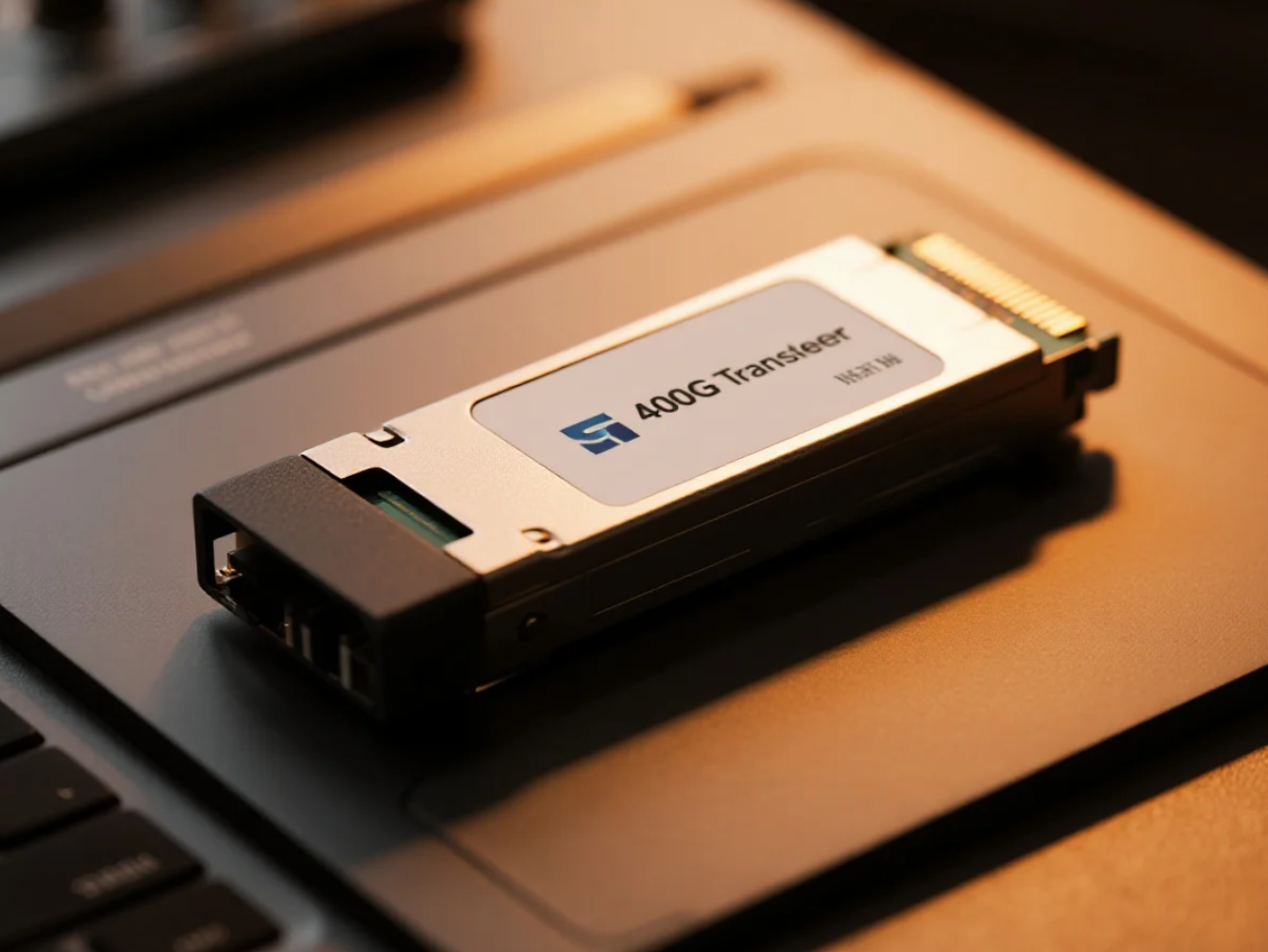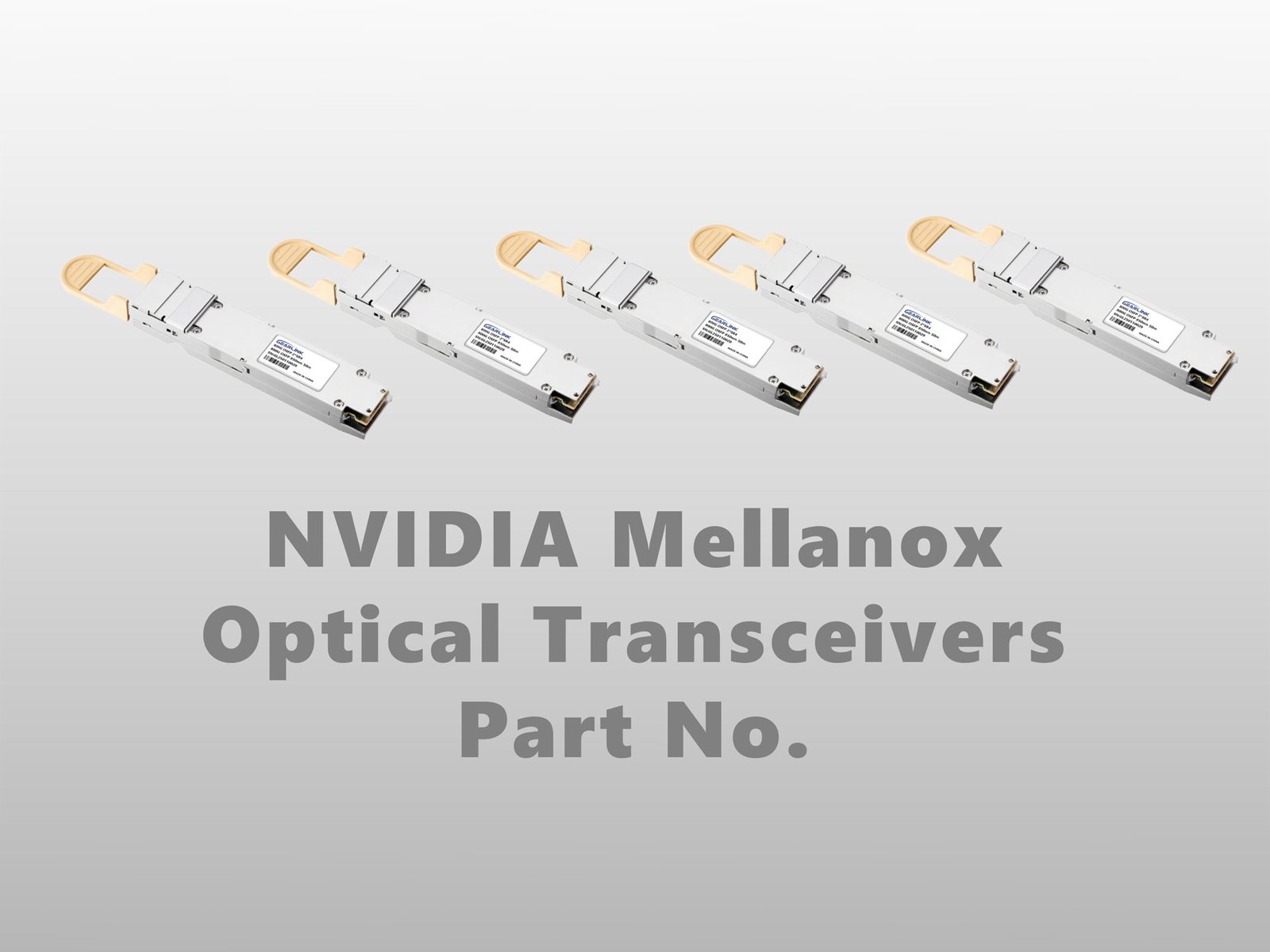The relentless demand for bandwidth in hyper-scale data centers and cloud networks has pushed the industry toward the 400 Gigabit Ethernet (400GbE) standard. At the heart of this transition is the Quad Small Form-factor Pluggable Double Density (QSFP-DD) module, which, as the name suggests, doubles the port density of the standard QSFP format. Choosing the correct 400G transceiver is a critical decision that impacts not just initial deployment costs, but also long-term operational efficiency and network scalability. This comprehensive guide, focusing heavily on the pivotal 400G QSFP-DD DR4, compares the leading short-to-medium reach solutions—DR4, SR4, and SR8—to help network professionals make an informed choice.
The adoption of 400G is largely driven by the need to support high-density spine-and-leaf architectures, which require massive inter-rack and inter-switch connectivity. The 400G QSFP-DD DR4 has emerged as a particularly versatile and compelling option in this landscape, providing a balanced solution for reaching distances up to 500 meters. Understanding the nuances of the DR4, in contrast to its siblings SR4 and SR8, is essential for optimizing fiber infrastructure and capital expenditure. 400G QSFP-DD DR4 utilizes four independent optical lanes, each operating at 100Gbps, making it an efficient and streamlined choice for many core data center links.
The Foundation: Understanding 400G QSFP-DD Technology
The QSFP-DD form factor is designed to house eight electrical lanes, each running at 50Gbps using PAM4 (Pulse Amplitude Modulation 4-Level) signaling, to achieve a total bandwidth of 400Gbps. This density is crucial for maintaining the footprint and thermal requirements of modern switches. However, the optical implementation of this 400Gbps signal varies significantly across different standards, directly influencing the required cabling, reach, and overall cost.
Decoding the DR4, SR4, and SR8 Designations
The suffixes DR4, SR4, and SR8 are defined by the industry to specify the modulation, number of fibers/lanes, and maximum reach:
| Standard | Max Reach (OM4/SMF) | Wavelength | Lane Count & Speed | Fiber Type | Key Use Case |
| 400G QSFP-DD DR4 | 500m (SMF) | 1310nm | 4×100Gbps | Single-Mode | Data Center Spine-to-Spine, Leaf-to-Spine |
| 400G QSFP-DD SR4 | 70/100m (OM3/OM4) | 850nm | 4×100Gbps | Multi-Mode | Inter-Rack, Short Reach |
| 400G QSFP-DD SR8 | 70/100m (OM3/OM4) | 850nm | 8×50Gbps | Multi-Mode | High-Density Breakout (8x50G) |
The defining characteristic of the 400G QSFP-DD DR4 is its use of Single-Mode Fiber (SMF), which, while being slightly more expensive than Multi-Mode Fiber (MMF) in terms of the optics, offers superior reach and a future-proof path for higher speeds. This makes the 400G QSFP-DD DR4 indispensable for connecting devices across longer distances within or between facilities.
In-Depth Focus: The Versatility of 400G QSFP-DD DR4
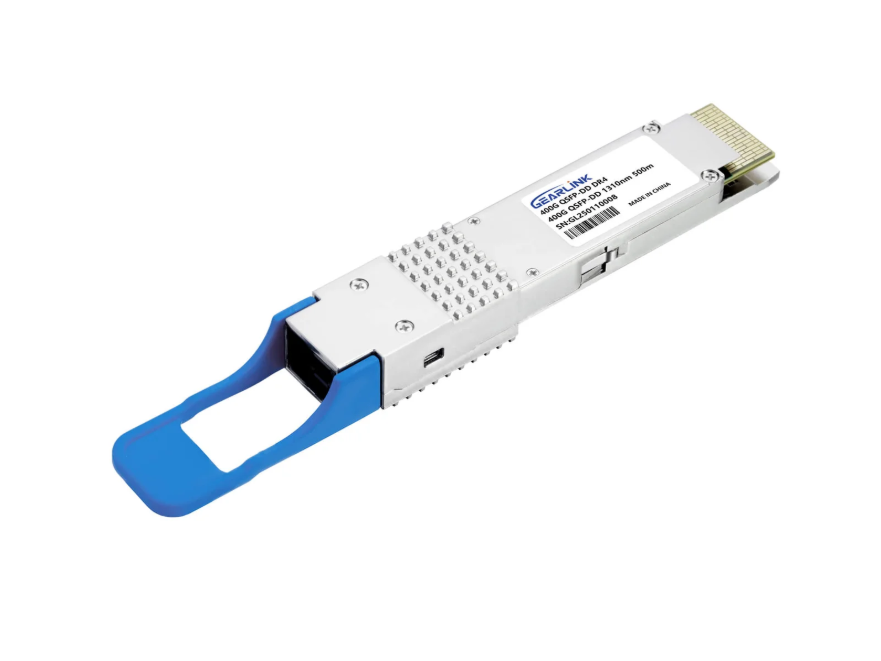
The 400G QSFP-DD DR4 standard operates over four lanes of 100Gbps using 1310nm optics. Its reliance on SMF is a major advantage for network operators building modern, large-scale data centers. Because SMF has significantly lower modal dispersion than MMF, the 500m reach is guaranteed, perfectly bridging the gap between short-reach (SR) and longer-reach (FR4/LR4) modules.
Key Advantages and Features of 400G QSFP-DD DR4
- Extended Reach with Breakout Capability: The 500m reach is often ideal for connecting equipment across large data center floors or even between adjacent buildings on a campus. Crucially, the 400G QSFP-DD DR4 can be seamlessly broken out into four independent 100G links using a MPO-to-LC fiber harness, connecting to four 100G transceivers. This breakout functionality is a massive value proposition for transitioning from 100G infrastructure to 400G, maximizing port utilization, and reducing overall cost per bit.
- Lower Fiber Count for 400G Links: Unlike the SR8 module, which uses 16 fibers (8 transmit, 8 receive) for a single 400G connection, the 400G QSFP-DD DR4 requires only 8 fibers (4 transmit, 4 receive). This halving of the fiber count simplifies cable management, reduces the space needed in conduits and cable trays, and ultimately lowers the cost of the fiber infrastructure.
- Future-Proofing with Single-Mode Fiber: Investing in SMF for 400G QSFP-DD DR4 connections aligns with the industry’s direction toward 800G and beyond. SMF is the undisputed medium for high-speed, long-distance communication. Data centers built with SMF are inherently better prepared for future upgrades, minimizing the need for costly and disruptive re-cabling projects.
Comparative Analysis: DR4 vs. SR4 and SR8
While 400G QSFP-DD DR4 offers significant benefits, the SR4 and SR8 transceivers also serve vital roles, primarily in short-reach, high-volume connectivity.
400G QSFP-DD SR4
The SR4 (Short Reach, 4 lanes) is the most straightforward 400G solution, utilizing four optical lanes on MMF. It’s the lowest-cost option and is generally preferred for very short links, typically within a single rack or adjacent racks, where the fiber runs are 100m or less. The low cost and simplicity of MMF cabling make it an economical choice for massive deployments, provided the reach limitations are acceptable.
400G QSFP-DD SR8
The SR8 transceiver employs eight parallel 50Gbps lanes over MMF, offering a different pathway to 400G. Its main advantage is its innate ability to be broken out into eight separate 50G links, which is useful in older network segments or for connecting specific legacy equipment. However, the SR8 requires twice the number of fibers (16) compared to the DR4 and SR4, leading to increased complexity and density in the cabling infrastructure. This can sometimes negate the cost savings of using MMF, making a strong case for the four-lane simplicity of the 400G QSFP-DD DR4.
Choosing the Right Transceiver: A Practical Decision Matrix
Selecting the appropriate transceiver hinges on a few critical factors that network architects must weigh:
- Reach Requirement: If links exceed 100m (up to 500m), the 400G QSFP-DD DR4 is the clear and superior choice, as SR modules are physically limited by MMF dispersion.
- Breakout Strategy:
- For 4×100G breakout capability, 400G QSFP-DD DR4 is ideal.
- For 8×50G breakout, SR8 is the only option, but requires a significantly higher fiber count.
- SR4 is generally reserved for simple, single 400G links over short MMF runs.
- Fiber Infrastructure: Data centers with existing SMF are perfectly positioned to leverage the full benefits of the 400G QSFP-DD DR4. Conversely, a network heavily reliant on existing MMF might find SR4 or SR8 more appealing, despite the limitations. However, it is widely accepted that new backbone deployments should prioritize SMF infrastructure to maximize longevity and scalability.
- Power Consumption and Thermal Management: While all QSFP-DD modules are designed to be power-efficient, variations exist. Generally, the power consumption is related to the complexity of the optics, with DR4 often offering a highly efficient design due to the 1310nm parallel optics structure.
In conclusion, the 400G QSFP-DD DR4 stands out as the most balanced and versatile solution for modern hyper-scale and enterprise data centers. It effectively balances reach, fiber efficiency, and the critical 4×100G breakout path, ensuring a smooth, scalable, and cost-effective transition to 400GbE networking. By prioritizing the 400G QSFP-DD DR4 for spine-and-leaf and inter-data center connectivity, network designers can build robust, future-ready optical networks.
Frequently Asked Questions (FAQ)
Q1: Can 400G QSFP-DD DR4 be used for longer distances than 500 meters?
A: The standard 500m reach is guaranteed for 400G QSFP-DD DR4 as defined by the IEEE/MSA. For reaches up to 2 kilometers, the 400G QSFP-DD FR4 standard is typically recommended, as it uses a different optical technology (LAN-WDM) to achieve the greater distance over SMF.
Q2: Is the cabling for 400G DR4 more expensive than SR4?
A: The 400G QSFP-DD DR4 requires Single-Mode Fiber (SMF) which has historically been slightly more expensive than Multi-Mode Fiber (MMF) used by SR4. However, SMF provides much greater longevity and a significant cost-per-meter advantage over MMF in high-speed, long-distance links, ultimately offering a better long-term return on investment, especially considering the simpler, lower fiber count.
Q3: How is the 400G QSFP-DD DR4 broken out into four 100G links?
A: The 400G QSFP-DD DR4 is typically connected to an MPO-12 connector. The breakout is achieved by using a 400G MPO-to-LC fiber harness/cable assembly, which splits the four 100G optical lanes into four individual duplex LC connector pairs, allowing them to connect directly to four separate 100G (e.g., 100G QSFP28 DR) transceivers.
